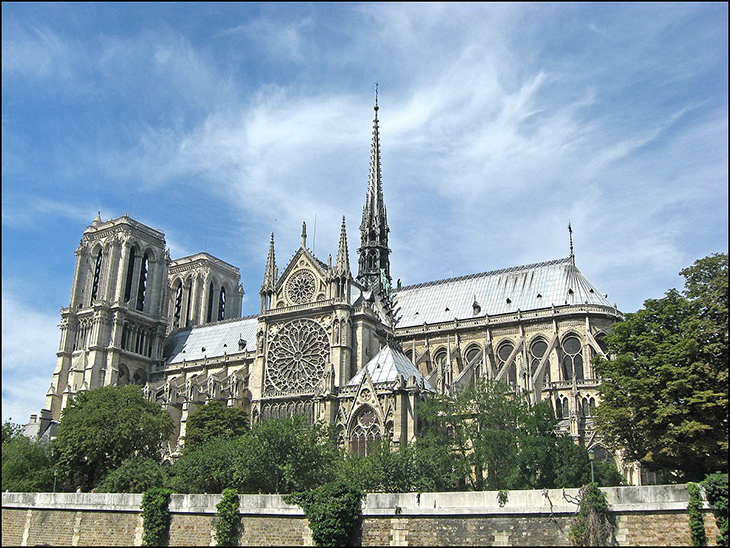
The archeology world has been rocked after a major discovery was made after archaeologists uncovered a number of stone tombs and a lead sarcophagus under the Notre Dame Cathedral floor in Paris.
This amazing discovery is considered a “remarkable scientific discovery,” a large number of slot tombs and a “completely preserved, human-shaped sarcophagus made of lead” believed to still be filled with human remains.
The tombs were found beneath the floor due to preparatory work that was being done to reconstruct the cathedral’s spire above in the area where the transept cross the nave. This was actually destroyed during the fire that struck the cathedral in 2019. Experts also believe that the tombs originated from as far back as the 13th century.
Lead happens to be a huge part of the back story of the cathedral, which is why it wasn’t as surprising to find that there was a sarcophagus made out of it. In fact, the church’s restorers have spent years cleaning the rather toxic metal off of the stones and timbers it melted on during the fire.
While the sarcophagus couldn’t handle the weight of the debris that fell on it from the ceiling, it still managed to remain intact, and researchers have chosen to use a mini endoscopic camera to be able to look inside it.
#Maddow
Science break.
Notre-Dame Repair Crews Discover an Ancient Graveyard With a Sealed Lead Sarcophagus. Items included painted sculptures, including the bust of an unidentified bearded man, carved hands and vegetables, and could date to as early as the 13th century. pic.twitter.com/gdWy85kYi8— Firecaptain (@Firecaptain16) April 1, 2022
Lead archaeologist, Christophe Besnier, shared with The Guardian, “You can glimpse pieces of fabric, hair and a pillow of leaves on top of the head, a well-known phenomenon when religious leaders were buried.”
France’s culture ministry describes the finding as being “of remarkable scientific quality."#AncientCivilizations #Archaeology #Death #France #NotreDame https://t.co/lyCG30hmMU
— ForeverScholars (@ForeverScholars) March 28, 2022
He added, “The fact that these plant elements are still inside means the body is in a very good state of conservation.”
Not only did they find some tombs and a sarcophagus, the remains of painted sculptures were also found, including one such undamaged bearded male head, sculpted vegetables, and some hands with painted sleeves. Moreover, a 19-th century hot water heating system was discovered as well.
Experts share that this incredible discovery has also given them some major insight into the funerary practices that were done in France during the Middle Ages. They also claim that this is yet more proof of the Notre Dame Cathedral’s significant value to the world. Thankfully, the plans to reopen the cathedral in 2024 are still in place to coincide with the scheduled 2024 Olympics.
What are your thoughts? Please comment below and share this news!
True Activist / Report a typo


